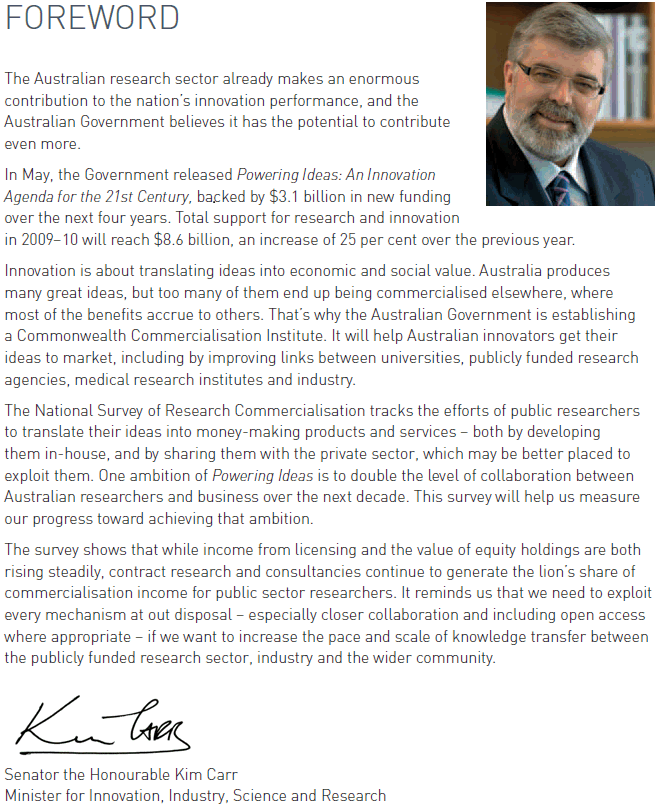|
|
|
|
|
|
|
News & Views item - August 2009 |
![]() Commercialisation of Public Sector Research "Has Become a Cargo Cult".
(August 5, 2009)
Commercialisation of Public Sector Research "Has Become a Cargo Cult".
(August 5, 2009)
Issued last month, the National Survey of Research Commercialisation 2005-2007 notes that the total of $213 million in licences and options was generated by the 40 respondents to the national survey of research commercialisation in 2007 and is testament to the extreme difficulties involved in directly commercialising research.
The Australian's Guy Healy writes in today's HES: "UQ's Mark Dodgson, an adviser to the Cutler review of innovation, told the HES that the modest financial returns punctured the myth that blockbuster innovations could be developed through publicly funded research. 'It's not very much money when you consider that universities and the CSIRO spend over $6 billion on research,' Professor Dodgson said".
The short of it for 2007 can be summarised:
The 40 respondents generated an estimated $8.3 billion from sales of licensed technologies -- including those in which they no longer had a stake.
Only five institutions generated more than $5 million in direct licences, options and assignments for themselves.
Monash generated $101 million from IVF.
University of Queensland generated $45 million mainly from the licensing of the cervical cancer vaccine Gardasil.
CSIRO obtained $30.6 million.
University of New England, $6.8 million derived from cattle genetic research.
University of Melbourne, $6 million.
Leaving $41.6 million for the remaining 35 respondants.
In Professor Dodgson's view: "We have an unrealistic view of research commercialisation. We have come to believe it's a silver bullet that will produce lots of discretionary dollars for universities, but the instances where it will produce substantial returns are very few and far between... [The] highly skewed pattern (of commercial success from discoveries) is pretty typical worldwide. We have to get real about the potential of research commercialisation bringing substantial research income into the [public research] sector."
And according to Mr Healy, Professor Dodgson said he feared that high levels of "procedures and bureaucracy" in university commercialisation offices may be acting "as a deterrent" to collaborations with industry, preventing many potentially valuable connections.
Mr Healy also reports: "Terry Cutler, who last year headed the government's review of research and innovation, told the HES that universities' commercialisation activity came at the cost of broad knowledge transfer in the public interest. Dr Cutler said the survey showed the commercialisation result for most institutions was 'cash negative', in line with the trend overseas. 'Commercialisation is marginal to universities but has dominated their agenda. As Professor Alan Hughes from Cambridge in the UK has said, research commercialisation has become a cargo cult. The core business of universities is around producing skilled graduates, which are the crucial talent pool for innovation. Every survey of what firms value (reveals it) is not access to exclusive intellectual property but knowledge exchange and public forums and skilled faculty.'"
Monash's pro vice-chancellor for industry engagement Rod Hill notes the "true technology transfer" performed by all universities [is] through internships, secondments, staff exchanges and graduates.
Will the essence of this report and the views expressed by Professors Dodgson, Hughes, Hill and Dr Cutler influence the policies championed by the Minister for Innovation, Industry, Science and Research -- well, read his forward to the report.
_________________________________________
